Cusco › Cybele › Korean Celadon Pottery » Origins and History
Articles and Definitions › Contents
- Cusco › Origins
- Cybele › Who Was
- Korean Celadon Pottery › Origins
Ancient civilizations › Historical places, and their characters
Cusco › Origins
Definition and Origins
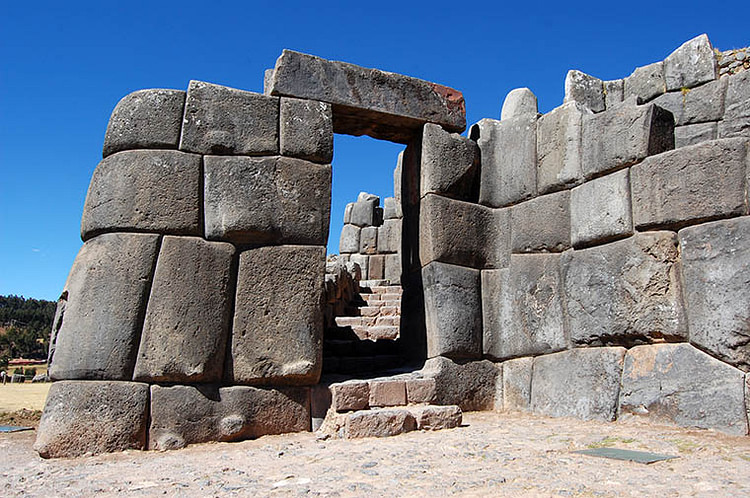
Cuzco (also Cusco or Qosqo) was the religious and administrative capital of the Inca Empire which flourished in ancient Peru between c. 1400 and 1534 CE. The Incas controlled territory from Quito to Santiago, making theirs the largest empire ever seen in the Americas and the largest in the world at that time. Cuzco, which had a population of up to 150,000 at its peak, was laid out in the form of a puma and was dominated by fine buildings and palaces, the richest of all being the sacred gold -covered and emerald-studded Coricancha complex which included a temple to the Inca sun god Inti.
CUZCO IN MYTHOLOGY
In mythology the Inca race was created by the great god Viracocha who caused them to be born from the sun god Inti. The first eight Incas were thus born at Tiwanaku or, in an alternative version, they emerged from the sacred Pacaritambo cave, and then they migrated down to the Cuzco valley. Led by Manco Capac (or Manko Qhapaq) and Mama Ocllo, the group fulfilled the earlier prophecy whereby they should settle where their golden staff could be easily driven into the ground. Before the Incas could prosper, though, they first had to defeat their local rivals, the Chanca, a feat they achieved with the help of stone giants, the pururaucas. This event did have a basis in reality, as the Incas did indeed defeat the Chanca in 1438 CE.Thus the Inca capital was established. The name Cuzco may derive from either qosqo, meaning 'dried-up lake bed' or cozco, a particular stone marker in the city.
GEOGRAPHY, LAYOUT & ARCHITECTURE
The geographical location of the site, on an ancient glacier lake bed and at a central point between natural routes leading off to diverse surrounding regions, was advantageous. The basin lies at an altitude of 3,450 metres and is surrounded by mountain peaks. Crops could be grown in the valley, and the hills provided good pasture. Cuzco is also the meeting point of three rivers - the Huatanay, Tullumayo, and Chunchul - making it especially significant and auspicious in the Inca mind. In typical Inca fashion, where nature was adapted but never abused, the rivers were canalized and diverted to create the space necessary for a large city.
CUZCO SAW A GREAT PERIOD OF RE-BUILDING IN THE MID-15TH CENTURY CE DURING THE REIGN OF PACHACUTI, KNOWN AS 'REVERSER OF THE WORLD'.
First habitation of settled populations was actually as early as 500 BCE or earlier, and the main pre-Inca settlement was Chanapata. Decorated pottery survives from this period, but there is no evidence of large buildings, artworks, or metal.Similarly, there are no remains from the Tiwanaku period at the Cuzco site itself. Cuzco really began to take shape from around 1200 CE but only took on the grandeur of a capital during the reign of Inca Roca in the 14th century CE. From that point on each Inca ruler built his own palace, a great walled residential complex. In addition, from 1400 CE the Incas embarked on ambitious campaigns to conquer neighbouring territory, eventually building a huge empire with Cuzco as the administrative and religious capital.
The city saw a great period of re-building and expansion in the mid-15th century CE during the reign of Pachacuti Inca Yupanqui, known as 'Reverser of the World'. The swamp area in the north was drained, and the heart of the city moved there.Large ceremonial plazas were laid out, the Sacsayhuaman (or Saqsawaman) fortress, which protected the north of the city, was built, and the sacred Coricancha complex was rebuilt to more appropriately reflect the wealth and power of the Inca Empire. Other building works over time, which increased the spread of Cuzco to some 40 hectares, seem to have been less deliberately planned, resulting in an irregular shaped urban area.
The whole capital was built around four principal highways which led to the four quarters of the empire. The city was also laid out in the form of a puma (although some scholars dispute this and take the description metaphorically) with the imperial metropolis of Pumachupan forming the tail, the main plaza representing the body, and the temple complex of Sacsayhuaman forming the head. The entire city was also divided into two distinct parts called the hanan and hurin; the former, in the north, was higher in elevation and more prestigious than its lower, southern, counterpart. Five noble families occupied each sector.The centre was dominated by the double plazas of Haucaypata ('Terrace of Repose') and Cusipata ('Fortunate Terrace') which, covered in imported sand, hosted religious and state ceremonies. These would be presided over by the Inca king, seated on his carved stone throne on a raised platform, the usnu, which also had a pillar for taking sightings of celestial bodies. Here there was also a giant stone basin covered in gold into which were poured libations of chicha beer. Dominating the plaza was the Sunturwasi, a spire which was the tallest structure in Cuzco.
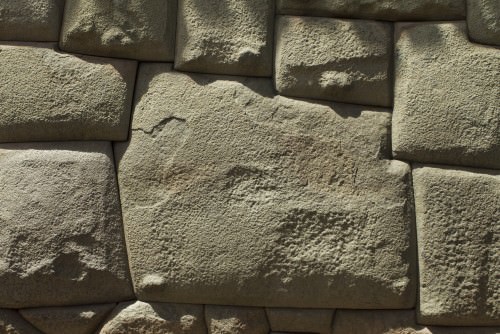
Inca 12 Angle Stone
Incorporating kanchas (small groups of buildings organised around a courtyard all within a high-walled enclosure), vast plazas, parklands, sacred agricultural fields, shrines, fountains, and canals, yet with the narrow streets of a culture without wheeled vehicles, the city was largely reserved for priests, nobility, and administrators, while the farming and artisan communities were spread out beyond Cuzco's walls where there were also hundreds of qollqa storehouses which had a huge storage capacity.The city proper had a population of around 40,000 with another 200,000 in the surrounding area at the time of the Spanish conquest.
Cuzco was also an important component in the propaganda of Inca rule. It was encouraged to be venerated by Inca subjects as a sacred site. This policy also entailed tributes both in real value objects, such as gold and artworks, but also in people, either rulers and/or their family members kept as hostages, forcibly relocated artists and skilled craftsmen and women, and the provision of sacrificial victims. In addition, radiating out from Cuzco were 41 sacred sight lines ( ceques ) and well-paved roads which divided both space and time and reminded that Cuzco was the centre of the world. Finally, small models of Cuzco have been discovered across the empire which must have spread the news of the capital's great size and wealth.
CORICANCHA
Most splendid of Cuzco's buildings was the Coricancha ( Qorikancha ), with its temples ( wasi ) built in honour of Inti, the moon goddess Mama Kilya (Quilla), the creator god Viracocha, Venus or Chaska-Qoylor, the god of thunder Illapa, and finally one for Cuichu the rainbow god. Each wasi contained a cult statue of that particular god and precious art and religious objects connected to them. The Coricancha, also known as the Golden Enclosure, was thus the most sacred of all Inca sites and considered the very centre of the world.

Coricancha
Built using the fine masonry skills for which the Inca have rightly become famous, the massive walls of the complex were built from large stone blocks finely cut and fitted together without mortar. The interior buildings were of one storey and had thatched roofs. The doors were also covered in gold sheets, as were the interiors and exteriors of the various temples, and the inner side of the perimeter wall was even said to have been studded with emeralds. The temple to Inti, also known as the Temple of the Sun, was lined with 700 2 kg sheets of beaten gold, symbolizing the sweat of the god, and Mama Kilya's temple was similarly lined with silver, symbolizing the tears of the moon.
Inside the Temple of the Sun, besides golden artefacts relevant to the god's worship, was a gold statue of Inti encrusted with jewels. The statue represented Inti as a small seated boy called Punchao (Day or Midday Sun). Another important representation of the god - a giant mask with zigzag rays bursting from the head - was hung from the wall of an especially dedicated chamber within the temple. The garden of the temple was even more spectacular. Just as land - sometimes even entire regions - were dedicated to the god, so too, this garden was constructed in honour of the great sun god. Everything in it was made of gold and silver. A large field of corn and life-size models of shepherds, llamas, jaguars, guinea pigs, monkeys, birds, and even butterflies and insects were all crafted in precious metal. And if that wasn't enough to please Inti, there was also a large number of gold and silver jars all encrusted with precious stones. All that survives of these wonders are a few golden corn stalks, a convincing, if silent, testimony to the lost treasures of Coricancha.
The Coricancha also had a dedicated space for the mummified remains of former Inca emperors and their wives, known as mallquis. These were brought out of storage during special ceremonies such as those celebrating the solstices. There were also living quarters for priests and priestesses, and still other rooms of the complex were used as art and religious treasuries stuffed with artefacts taken from conquered peoples. These may well have been kept in order to guarantee compliance to Inca rule, just as conquered rulers were sometimes held hostage at Cuzco for periods of the year. Yet another interesting feature of the site was an underground channel through which sacred water flowed to the surrounding squares outside the complex.
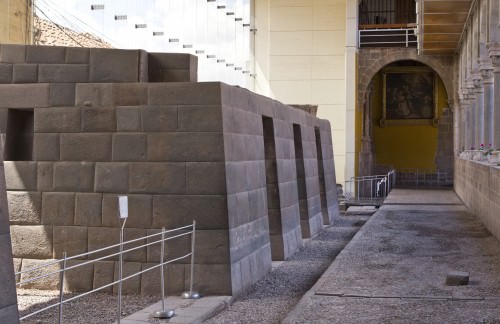
Coricancha
Other important functions of the Coricancha included the taking of astronomical observations, especially of the Milky Way (Mayu). Sacrificial victims ( capacochas ) were also made ready for their great moment in the precinct's courtyard and then marched along the ceque lines to be sacrificed in the various provinces in honour of Inti and his living incarnation, the Inca emperor.
SACSAYHUAMAN
The fortress of Sacsayhuaman, built by Pachacuti, was likely first constructed using mud and clay, later to be replaced by magnificent stone work which employed huge finely cut blocks, many weighing over 100 tons. Designed by four architects (Huallpa Rimachi, Maricanchi, Acahuana, and Calla Cunchui) and built using 20,000 tribute labourers, the structure has three terraces set in zigzag fashion so that each wall has up to 40 segments which allowed the defenders to catch attackers in a crossfire. Only one small doorway on each terrace gave access to the interior buildings and towers on the hillside behind. The fortress was said to have had a capacity for 1,000 warriors. Following the collapse of the empire, most of the stones were re-used elsewhere, and the ruins were covered in earth to prevent their use by rebel forces.
DESTRUCTION
The Incas expanded their territory to such a degree that a mere 40,000 Incas controlled an empire of 10 million subjects. The Inca Empire was founded on, and maintained by, force which made the leaders unpopular with their subjects (especially in the northern territories), a situation that the Spanish C onquistadores, led by Francisco Pizarro, would take full advantage of in the middle decades of the 16th century CE. The Inca Empire also had to face various rebellions including a war in Ecuador where a second Inca capital had been established at Quito. Even more serious, the Incas were hit by an epidemic of European diseases such as smallpox which had spread from Central America even faster than the European invaders themselves, and the wave killed a staggering 65-90% of the population. Such a disease killed Wayna Qhapaq in 1528 CE and two of his sons, Waskar and Atahualpa, battled in a damaging civil war for control of the empire just when the European treasure-hunters arrived. It was this combination of factors - a perfect storm of rebellion, disease, and invasion - which ultimately brought the downfall of Cuzco and the mighty Inca Empire.
Cuzco was sacked, its main buildings either burned and destroyed or taken to pieces for reuse in new construction projects.Thus the once golden splendour of Inca Cuzco now, unfortunately, survives only in the eye-witness accounts of the first Europeans who marvelled at its architecture and riches and the odd stretch of Inca walls, especially the precisely cut supporting walls of the Dominican monastery.
Cybele › Who Was
Definition and Origins

History verifies the importance of religion not only on a society's development but also on its survival; in this respect the Romans were no different than other ancient civilizations. During the formative years of the Roman Republic, especially after its territorial acquisitions following the Four Macedonian Wars, contact with the Greek culture -- especially their religion -- left a lasting imprint on the Roman way of life. Along with other aspects of the Hellenic civilization, the Romans adopted the pantheon of Greek gods, although they changed many of their names. However, besides this array of deities, they also acquired several of their cults, and cults were not always welcomed by those in authority, a concept that would carry through into the Empire. While Bacchus (Dionysus to the Greeks) was the most notable of these cults and to those in authority, and considered the most threatening to social order, this contact also brought a less menacing sect: the Cult of Cybele.
GREEK GODS IN ROME
The Hellenic culture had arrived, and to ward off this influx and its impact on society, Roman authorities felt the need to reaffirm their moral superiority over the Greeks; after all, they had been victorious in battle against Greece. The appearance of Greek culture had been, for the most part, positive. Under this Greek influence, the Roman gods became more human, exhibiting such diverse characteristics as jealousy, love, and hate. However, unlike in Greece, in Rome an individual's self-expression of belief was not considered as important as adherence to ritual. In an effort to avoid religious zeal, the state demanded a strict adherence to a rigid set of rituals. While this integration of the Greeks gods was never seen as a viable threat -- they easily fit into the existing array of gods -- some cults proved to be something completely different: a genuine danger to the prevailing state religion.
CYBELE WAS THE MISTRESS OF WILD NATURE (SYMBOLIZED BY HER CONSTANT COMPANION, THE LION), A HEALER, THE GODDESS OF FERTILITY & PROTECTRESS IN TIME OF WAR.
In 186 BCE the Roman Senate, recognizing a potential menace, suppressed the worship of the Greek god of wine, Dionysus, known to the Romans as Bacchus. His worship is best remembered for its intoxicating festival held on March 17, a day when a Roman male youth would supposedly become a man. The cult was viewed as being excessively brutal, supposedly involving ritual murder and sexual excess. As a result, many of its adherents were either imprisoned or executed. It should be noted, however, that the authority's fear of this cult was largely generated, not from first-hand experience (the cult's rituals were always conducted in secret) but from the writings of the historian Livy (c. 64 BCE-17 CE) who consistently portrayed the cult as a dangerous menace to social stability and characterized adherents as little more than drunken beasts.
While the government, influenced by Livy, viewed this cult as a threat, overall, Roman citizens questioned this harsh view of the Cult of Bacchus. They considered it no different or less immoral than the worship of the Asia Minor goddess Cybele.Actually, the major difference between the two was that the Cult of Bacchus was never sanctioned by the Roman Senate while Cybele's was. Known as the Great Mother or Magna Mater, Cybele, whose chief sanctuary was at Pessinus, was one of the early female deities, first appearing in the province of Lydia as a goddess of the mountains. Arriving from Phrygia, she made her initial appearance in Greece in the 5th century BCE with a temple in Athens (the Metroum); the Greeks identified her with the goddess Rhea (mother of the Olympians) and Demeter (goddess of the harvest). While never achieving great popularity in Greece, the cult reached Rome around the end of the 3rd century BCE.

Cybele Plate
THE CULT OF CYBELE IN ROME
Originally, the Cybelean cult was brought to Rome during the time of the Second Punic War (218 -201 BCE). At that time the Carthaginian general Hannibal was wreaking havoc in Italy, posing a serious threat to the city of Rome. The Sibylline Books, books of prophecy consulted by the Roman Senate in times of emergencies, predicted that Italy would be freed by an Idaean mother of Pessinus; to many, this meant Cybele. A black meteorite, representing the goddess, was brought to Rome from Asia Minor in 204 BCE. Miraculously, Hannibal and his army left shortly afterwards to defend Carthage against the invading Romans; a temple honoring Cybele would be built on Palatine Hill in 191 BCE. The cult eventually achieved official recognition during the reign of Emperor Claudius (41 - 44 CE). Ultimately, her appeal as an agrarian goddess would enable her to find adherents in northern Africa as well as Transalpine Gaul.
Due to its agricultural nature, her cult had tremendous appeal to the average Roman citizen, more so women than men. She was responsible for every aspect of an individual's life. She was the mistress of wild nature, symbolized by her constant companion, the lion. Not only was she was a healer (she both cured and caused disease) but also the goddess of fertility and protectress in time of war (although, interestingly, not a favorite among soldiers), even offering immortality to her adherents.She is depicted in statues either on a chariot pulled by lions or enthroned carrying a bowl and drum, wearing a mural crown, flanked by lions. Followers of her cult would work themselves into an emotional frenzy and self-mutilate, symbolic of her lover's self-castration.
CYBELE & ATTIS
Important to the worship of Cybele was Attis, the Phrygian god of vegetation, also considered a resurrection god (similar to the Greek Adonis ). Supposedly, Attis was Cybele's lover, although some sources claim him to be her son. Unfortunately, he fell in love with a mortal and chose to marry. According to one story, on the day of their wedding banquet, the irate and jealous goddess apparently struck panic into those who attended the wedding. Afraid for his own safety (no mention is made of his bride), the frightened groom fled to the nearby mountains where he gradually became insane, eventually committing suicide but not before castrating himself. Regaining her own sanity, the remorseful Cybele appealed to Zeus to never allow Attis's corpse to decay. Myth claims that he would return to life during the yearly rebirth of vegetation; thus identifying Attis as an early dying-and-reviving god figure.

Attis
CYBELEAN FESTIVAL
In Rome, Cybele's popularity continued to flourish, partially due to her spring festival held in March (some sources say April) called the Megalensia. The festival included public games as well as a theatrical performance at Circus Maximus. It began on March 15 with a procession of reed-bearers ( cannophori ) and a ritual sacrifice; the latter was for the successful planting of spring crops. On March 22, after a week of fasting and purification, a pine tree (the symbol for Attis) was brought to Palatine Hill temple. Later, there was a banquet -- a day of joy or Hilaria. Next came the Day of Blood, March 24, representing the castration and death of Attis. The celebration closed on the March 25 with a ritual bath or lavation of Cybele's image. All of the cult's priests or Galli were eunuchs, something that initially prevented Roman citizens from joining. Until the reign of Claudius, Roman law stated that no one could maintain his citizenship if he became a eunuch.
Cybele was one of many cults that appeared in Rome. Some were considered harmless, the Cult of Isis for example, and allowed to survive while others, like Bacchus, were seen as a serious threat to the Roman citizens and was persecuted. Of course, almost all of these cults disappeared with the arrival of Christianity when Rome became the center of this new religion. The Cult of Cybele lasted until the 4th century CE, at which time Christianity dominated the religious landscape and pagan beliefs and rituals gradually became transformed or discarded to suit the new faith.
Korean Celadon Pottery › Origins
Ancient Civilizations
The celadon (or greenware) ceramics produced in ancient Korea during the Goryeo Dynasty (918-1392 CE), are regarded as some of the finest and most elegant pottery pieces produced anywhere. With a pale green lustre reminiscent of jade and a super smooth glaze Goryeo celadons remain some of the most prized collector's items in the world of ceramics.
ETYMOLOGY
The name celadon is a 17th-century CE French word of Greek origin used to refer to colours ranging from blue-green ('kingfisher') to soft grey-green seen in certain ceramics. The French had chosen the word as it was the name of the shepherd hero of the pastoral romance Astrée by Honoré d'Urfé. This character wore a striking green cloak and so the word came to be fashionable for describing particular greens. Celadon was incorporated into the English language from the 19th century CE for the same purpose. Ceramics experts, however, prefer to use the term 'greenware.'

Celadon Fish-Dragon Ewer, Goryeo Dynasty
ORIGIN & PROCESS
First produced in China, celadon wares quickly gained popularity across Asia and in Korea specifically from the 9th century CE when there was increased contact with the Song Dynasty. It may be that the colour association with precious jade was another reason for celadon's success. As one Xu Jing, an envoy from China, noted on visiting the Goryeo court, "Korean's call the green colour of ceramics jade" (Koehler, 24).
BY THE 12TH CENTURY CE KOREAN CELADON CERAMICS, WITH THEIR SOFT PALE GREY-GREEN COLOUR, WERE EVEN FINER THAN THOSE PRODUCED IN CHINA.
Initially, the Korean wares were rather crude, but by the 12th century CE Korean celadon ceramics, with their soft pale grey-green colour, were even finer than those produced in China. Again, Xu Jing noted that "The recent techniques are more sophisticated and the glaze even more beautiful" (ibid). Areas particularly noted for their skill at producing fine celadons included the Buan and Gangjin regions in the Jeolla Province of southwest Korea where the kilns were controlled by the government. The popularity and esteem with which celadons were held are attested by their presence in royal Korean tombs.
The green colour of celadons is achieved by firing the clay in an oxygen-reducing kiln with a glaze containing a low percentage of iron oxide ( cheolhwa ). It is the quantity of the latter which determines the hue of the green. Firing temperatures were around 1150 °C. The method gives an extremely smooth surface to the finished vessel although many fine cracks in the glaze are typical, even desirable.
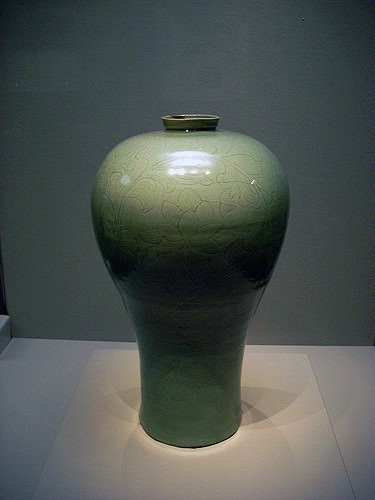
Maebyeong Celadon Vase, Goryeo Dynasty
With the Mongol invasions of the peninsula and the systematic destruction of workshops in the 13th century CE production of celadons was, unfortunately, brought to a halt. When potters were able to resume their work in the late 13th and 14th centuries CE, the wares were no longer as outstanding as previously, and the famous pale green lustre was replaced by an altogether darker and duller green finish. Today, modern workshops using traditional methods are once again producing celadon ceramics, especially in the 16 kilns of Gangjin, where there is an annual celadon festival.
DESIGNS & DECORATION
Korean vases are almost always tall and elegantly curved whilst other pieces such as those depicting animals and people are intricately carved. Vessels were decorated with low or high relief designs, especially floral patterns using the lotus leaf and flower, peony and chrysanthemum flowers, and birds such as waterfowl. Many motifs, especially cranes and clouds, are also associated with Buddhism (the state religion of the time), and more than one historian has noted, like Kyung Moon Hwang, that "these ceramics' almost indescribable sheen itself seems to evoke Buddhist spirituality" (42).
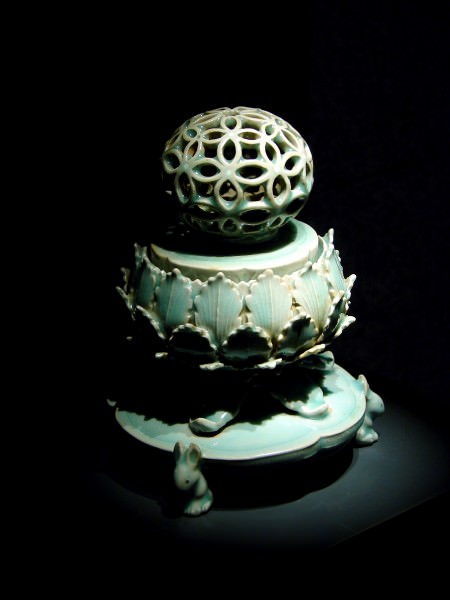
Korean Celadon Incense Burner
Vessels left undecorated often have simple linear designs engraved on them while others have more intricate black, red, brown, and white clay inlays in a technique unique to Korea known as 'Sanggam.' Here designs are carved on the surface and the inlays added before applying a translucent slip. Some later vessels were also inlaid with gold. The inlays are so fine and the workmanship of such a high standard that, on the finished vessel, they appear to be brush strokes. Adding a dark red colour to pick out designs or used for outlines became common in the later period of Korean celadons, achieved by using a copper underglaze - the first such instance in world ceramics. Another popular decorative effect was to add mouldings which could then also be made into openwork.
While vases, jugs, and bowls were the most popular shapes, potters also produced a myriad of other items using celadon.Ceramic pillows with carved lion figures supporting a smooth cross-section, pitchers in the form of Taoist monks or mythical dragon-fish creatures, incense burners (used in temples and private homes) with intricate cut-out designs and topped by animal figures through whose mouths the incense smoke exits, and even curvaceous roof tiles were all executed with the finesse seen in more classical vessels. Indeed, such was celadon's popularity that King Uijong had one of his royal pavilions at the Goryeo capital of Gaesong entirely covered in celadon roof tiles in 1157 CE.

Celadon Ewer, Goryeo Dynasty
However, despite this variety in design, it is probably the maebyeong shape which best defines Korean celadon ceramics.These tall vases rise from a narrow base to an elegant and generously curved shoulder which ends in a small circular mouth.Many maebyeong vases, along with the finest examples of carved celadon wares, are on display at the National Museum of Korea and the Leeum, Samsung Museum of Art, both in Seoul, South Korea.
This article was made possible with generous support from the British Korean Society.
LICENSE
Article based on information obtained from these sources:with permission from the Website Ancient History Encyclopedia
Content is available under License Creative Commons: Attribution-NonCommercial-ShareAlike 3.0 Unported. CC-BY-NC-SA License